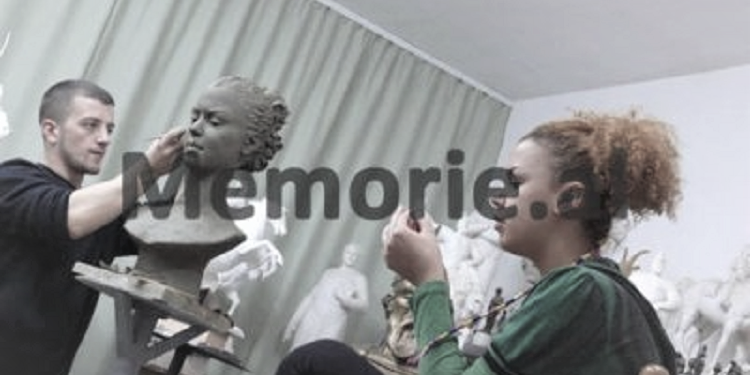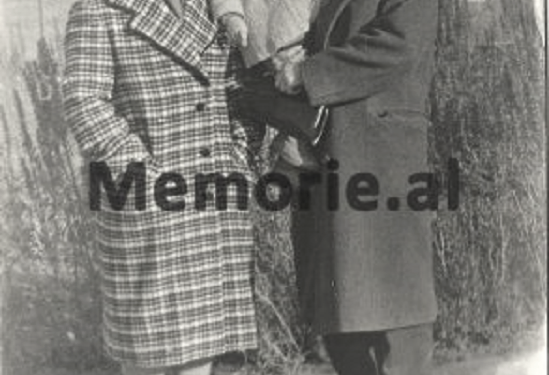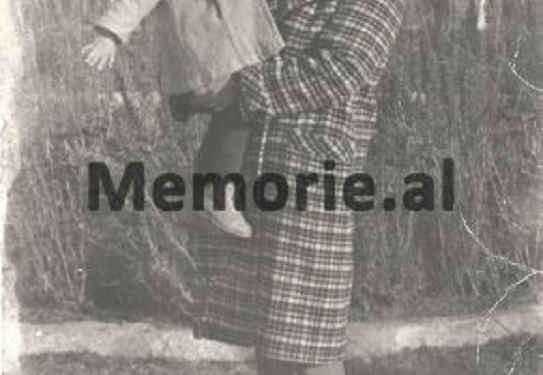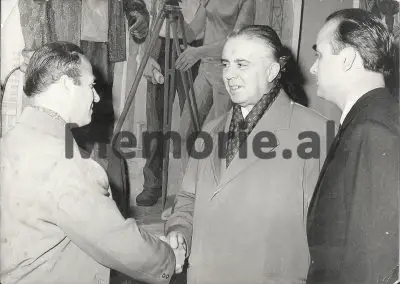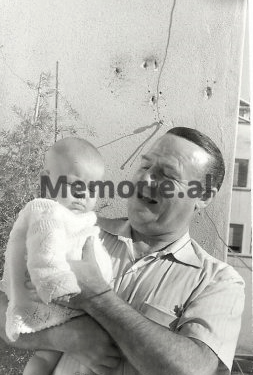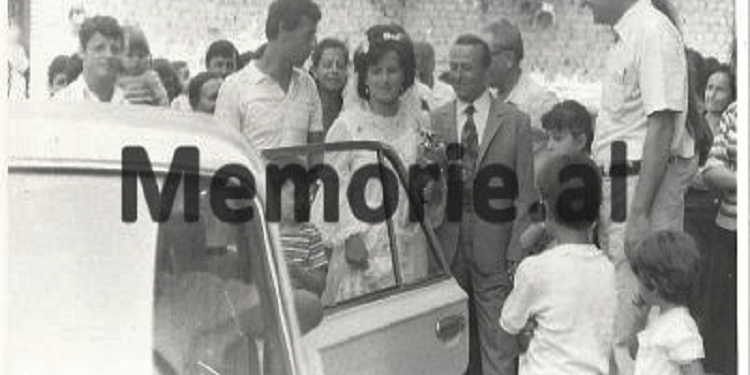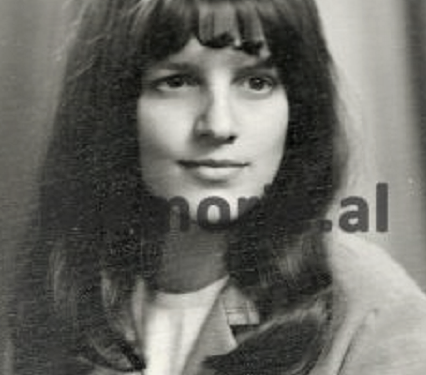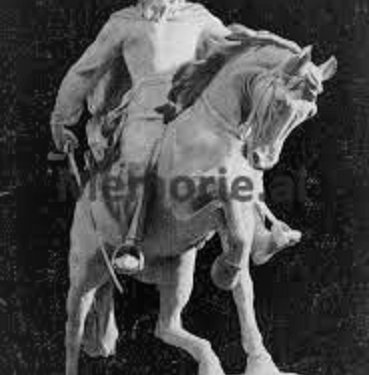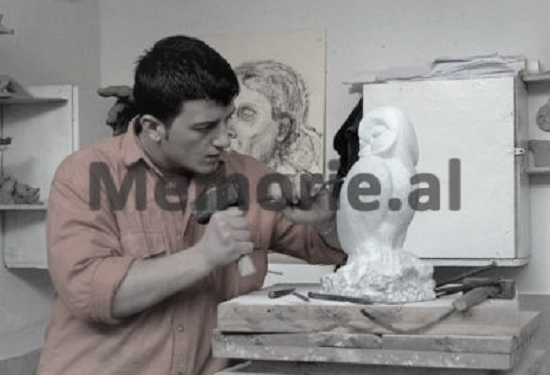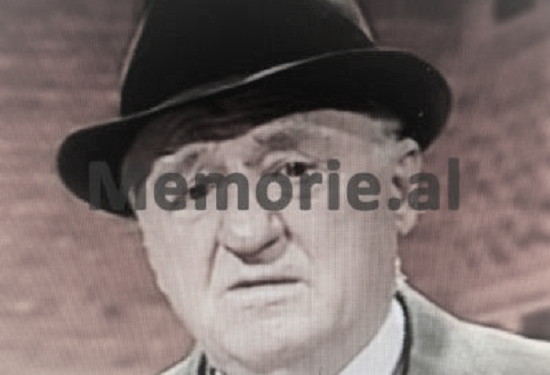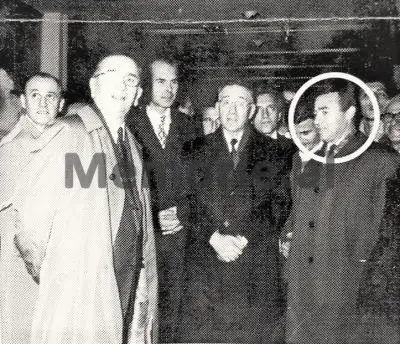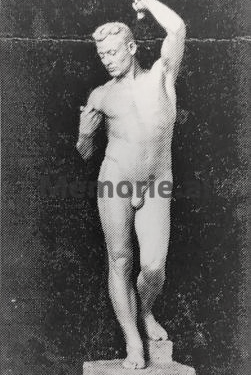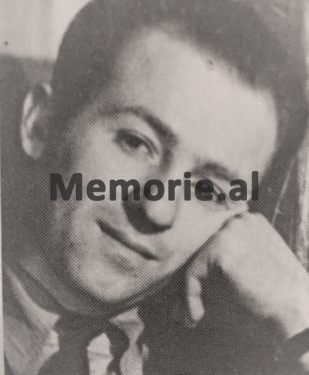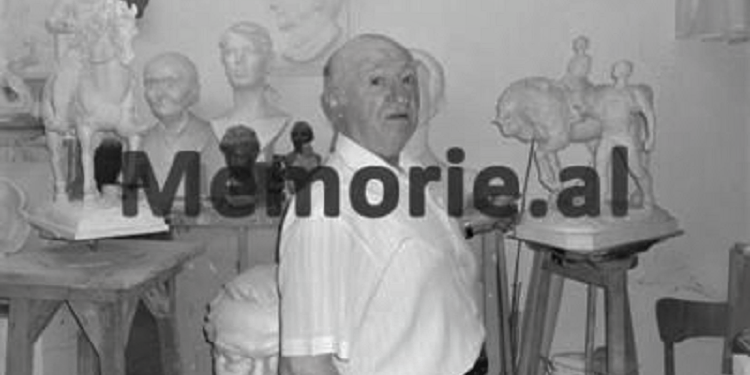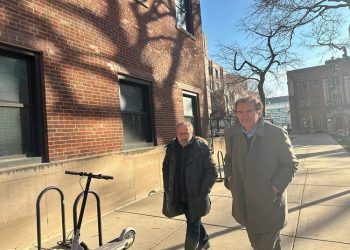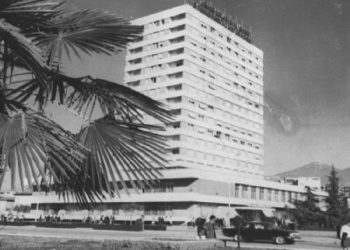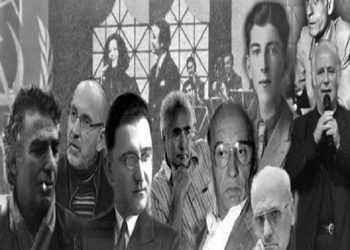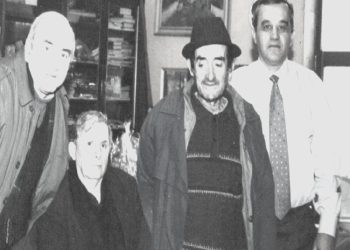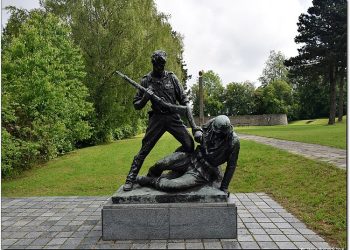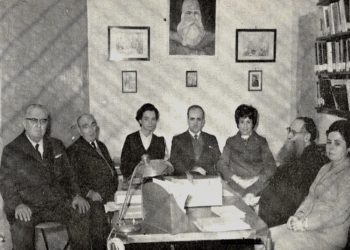Dashnor Kaloçi
Memorie.al publishes the unknown story of Thanas Papa originating from the village of Paftal in Berat, who after graduating from the Artistic High School “Jordan Misja” in Tirana with high results, being a classmate with well-known names such as Dhimitër Buda, Jorgji Gjinari, Shaban Hadëri, Kristaq Rama, Jakup Keraj, Gjinovefa Heba, Kujtim Spahivogli, etc., in 1954 he won a state scholarship and went to pursue higher studies at the “REPIN” Institute of the Academy of Fine Arts in Leningrad, which he graduated with a “Gold Medal”, performing as a thesis. “Skanderbeg on horseback”, a work that was poured into plaster and kept in the fund of that academy, as well as the postcard in Russia.
Thanas’ return to Albania and his appointment to the Institute of Cultural Monuments at the Medieval Art Sector, where he climbed the broken pottery that uncovered archeological expeditions and divorced his Russian wife, Valentina Cvetkova, who, after much pressure from her husband, State Security people and party and state bodies, was forced to sign the divorce and return to her homeland, along with the two-year-old little girl.
The many vicissitudes that followed Thanas due to the shadow of his ex-Russian wife, sending him for many years as a production worker, even though he had graduated with a ‘Gold Medal’ in one in Leningrad, where for some time he was employed and received as his assistants, Sali Shijaku, Kristaq Rama and Shaban Haderi, who was later one of the co-authors of the Skanderbeg monument that is still located in the center of Tirana.
“In 1966, after the open letter of the Central Committee of the ALP, they called me, and told me to go to Berat, where I would work as a production worker, and for this, I was pressured by the most diverse, mentioning to me my Russian wife, Valentina Ivana Cvetkova, with whom I was forced to divorce in 1961, after the break-up with the Soviet Union. I asked Nexhmije Hoxha for a meeting, but she cut me short, telling me “Go to Berat, where you have been assigned because we will not all become sculptors.” The man who speaks and testifies for Memorie.al, is Thanas Papa, the first Albanian, graduated in sculpture, at the “Rjepin” Institute of the Academy of Fine Arts, Leningrad, and probably among the only students to return with a gold medal in Albania
Who is Thanas Papa, and what is his past? Why was left in the shadows, the great master, who had 28 sculptures exhibited in public places of the Soviet Union? Why was the winner of many awards, inside and outside Albania, in 1966, sent to work as a convict in production? Why couldn’t his colleagues, Kristaq Rama, Shaban Hadëri, and Sali Shijaku, who in the 1950s, when Thanasi was working at the Leningrad State Institute for the Protection of Monuments, take him as his assistants, paid for the work they did?
Student at the Repin in Leningrad
Thanasi was born in 1931, in the village of Paftal in Berat, where his family originated from. His father had graduated from the “Normal” in Elbasan, and for some time in the early 1920s, he was elected secretary of the “Union” Society, being one of Avni Rustemi’s closest collaborators. Thanasi, after finishing the unique school in Berat, in the years 1945-’47, won a state scholarship and came to Tirana to continue the Artistic High School. In his class at that time, Dhimitër Buda, Jorgji Gjinari, Kristaq Rama, Jakup Keraj, Shaban Hadëri, Gjinovefa Heba, Kujtim Spahivogli, etc. taught names that would later become artists of the most famous that Albania had. Thanasi was one of the most talented students of the Lyceum in the field of drawing, and based on this, the teacher Dhimitër Çani, who taught that subject, insisted that Thanasi continue his higher studies. After graduating, only Thanasi and Jakup Keraj were able to win a state scholarship to continue their higher studies at the Rjepin Institute in Leningrad. In this regard, Thanasi recalls: “From us drawing students, the Ministry of Education gave us the right to continue higher studies with a state scholarship in the Soviet Union, only me and Jakup Keraj. After all, in addition to the drawing subject, where we performed better, we had other grades much better than our peers. So in 1954, we traveled to the Soviet Union to begin studies at the Rjepin Institute of the Academy of Fine Arts in Leningrad, today (St. Petersburg) which was established 220 years ago. At that institute, I studied for 6 years, and in my final year, when it came time to defend my degree, I chose to work on Skanderbeg on horseback. After presenting the draft diploma, the famous sculptor Manizer, who was the Vice President of the Academy, and the chairman of the evaluation committee of the diplomas, said: ‘What Thanasi wants to do is beyond all the possibilities of a student’. But I insisted that I do it, and I was approved. I started the ‘Skanderbeg on horseback’ work, which was over two meters high, in October 1956, and finished it in June 1957, working 12 to 14 hours a day. In June, diplomas were awarded, and the chairman of the commission was the famous sculptor Tomskij, who had made the bust of Stalin in Tirana. The evaluation of my work was maximal, and the commission spoke with superlatives considering it as excellent work. He decided that the work should be cast in bronze, but it could not be done, as all the funds of the Academy had been spent, because that year were the celebrations of the anniversary of the October Revolution. “After that, ‘Skanderbeg’ was poured into plaster in two copies,” Thanasi recalls, defending his diploma at the Rjepin Institute.
Wins ‘Gold Medal’
Many Russian students and professors went to help defend Thanasi’s diploma, and his Albanian friends and embassy staff were missing, although it was announced that: Thanas Papa would receive the gold medal for the excellent work he had done… In this regard, Thanasi recalls: “Along with me, Russian student Jevgeni Nikolajevic was awarded a gold medal, and at that 220-year academy, no gold medal was awarded for ten years. During the ceremony, the famous sculptor Kerbel said, ‘I did not come here by chance to this diploma defense, with these two poppies symbolizing the two friendly countries, Albania and the Soviet Union’. The Skanderbeg monument was then exhibited at the gallery of young artists at the general exhibition of the Union of Soviet Socialist Republics. She was also exhibited at the Moscow Gallery in 1957, on the occasion of the World Youth Festival. In addition to these exhibitions, that monument was made a postcard and distributed throughout Russia, and a copy of it was poured in plaster and brought to Tirana “, recalls Thanasi, for the great appreciation given to the monument of Skanderbeg that he and had completed as a thesis. But during the years that Thanasi was a student at that academy, he also attended another institute, and in this regard, he testified: “When I was in my second year of college, at the insistence of a Russian professor, I enrolled at the Institute of Defense and Restoration of Cultural Monuments. During my time there, I was offered a job at a Leningrad suburb, in an aristocratic building, which was restored by the State Inspectorate for the Protection of Cultural Monuments of Leningrad, in collaboration with the school where I studied. i. There, I dealt with the restoration of some lions that were in the main pores of that building. And to help me, I received Shaban Haderi, Sali Shijak, and Kristaq Rama, whom I paid regularly, as I received a satisfactory salary for the four years I worked there “, recalls Thanasi, regarding the restoration of these Monuments, and the faculty the second that followed.
In Albania, he climbs broken pots
Shortly before Thanasi defended his second degree, he married a Russian girl named Valentina Ivana Cvektova, who graduated in Oriental Languages and came to Albania with him. Regarding his arrival in Tirana and the “appreciation” given to his diploma, Thanasi recalls: “When I came to Tirana, I met the Deputy Minister of Education, Pipi Mitrojorgji, who told me that there were no jobs for sculptors, and I was sent to work at the University of Tirana, near the Archaeological Museum, in the Medieval Art Sector. There, I did a very ordinary job, climbing the broken pots, which were found in various archeological expeditions. Based on this, after four years, in April 1960, I quit that job in protest, as I wanted to work in my profession, where I had a lot of orders, and I had the opportunity to earn my salary. The University Rector was very revolted by my action, and sued me for firing, and enrolling me in a small inventory of all my belongings after it was decided that I should pay the entire state scholarship I had. taken for 7 years. This decision was later suspended, and I was sent as a lecturer at the Jordan Misja Art High School. With the break-up of Albania’s official relations with the Soviet Union, in December 1961, after much pressure from me, calling me every week to the Tirana Directorate of Internal Affairs, I was forced to divorce my wife, Valentina Cvetkova. who worked as a Russian language teacher, and with whom I had a 2-year-old daughter. Because I was so upset by the breakup with Valentina, the State Security regularly monitored me. I first learned this from my close friend Guri Madhi, who had a brother in the senior governing bodies of the State Security in Tirana, and another in the Central Committee. I remember that in December 1962, when Guri came to my studio, and after we drank a bottle of wine, he said to me, ‘Thanas, shut up, from now on, you won’t talk, you won’t listen. , and you will not see. ‘ If Guri hadn’t told me those words, I would have ended up in prison, because after that they started to discredit me in various meetings, such as in the work center, in the neighborhood, etc., for the only thing I had was a Russian woman”, recalls Thanasi, about his vicissitudes in Albania.
Nexhmija Hoxha: go into production
Thanas Papa’s vicissitudes did not end even after his separation from his Russian wife, but her shadow would follow him for many years to come. For this, he testifies: “After the open letter of the Central Committee of the ALP, in 1966, I was called and told to go to Berat, to work as a production worker. Of course, I did not want to leave Tirana and my profession. For this I asked Nexhmije Hoxha for a meeting, which at that time covered art and culture, and I told him to reconsider the possibility for me to work in my sculptor profession. She cut me short by telling me: ‘Go to Berat, where you have been assigned because we will not all become sculptors’. After that, I again refused to go to Berat, and in my place there they sent the writer Fatmir Gjata. For this refusal, I was sent as a worker to the foundry of the Dinamo Plant in Tirana, where I worked for five years, until 1971. This year, I was assigned to organize the Technological Foundation for the Disposal of Monuments, in which I worked for another five years, until 1975. There, I started everything from scratch, saving the state, millions of lek by pouring in the country, because before, this work process was done outside the country. “After 1975, I was sent to Jordan Misja Artistic High School, where I taught until 1990 when I retired,” recalls Thanasi, during his long years working in manufacturing, far from his honorable profession. with ‘Gold Medal’ in Leningrad.
Winner of international awards
Although Thanas was forced to work in manufacturing for ten years, despite unfair attacks, he never let go of the chisel, but continued to work quietly in his studio. He has participated in all the National Exhibitions that were organized before the ’90s, winning two first prizes, four second and one third. During his artistic career, he has realized over 200 works, of which 140 are well-known, and registered in the Study Sector at the National Gallery of Arts. The same gallery in its fund has 6 sculptures of Thanas, while 10 others are located in district museums, while 38 bas-reliefs and statues are located in different parts of the country. Thanasi has also participated in international exhibitions, such as in Moscow, Bucharest, Sofia, and Alexander, where he won the third prize with the “Awakening of Africa” monument. For this award, the international press raised him to the top, for his professionalism. Although Thanasi has 28 sculptures in the former Soviet Union and is considered one of the greatest masters of Albanian sculpture, he was persecuted, beaten, and left in the shadows for the reason of marrying his Russian wife. , Valentina, whom he was able to revisit and meet in 1991, along with their daughter, now 30 years old. The reason for this was Thanas ‘second wife, the famous architect, Shpresa Papa, who saved all the savings they had collected with effort and sacrifice since the beginning of the’ 80s when they got married and started a family. gave Thanas and urged him to go to Moscow to meet Valentina and the girl, with whom he had been forcibly separated from the communist regime, a full 30 years ago. Already at the age of 90 and with a life full of deprivation, Thanas Papa together with Shpresë are happy to follow the work of their exit, Besit, also one of the most gifted sculptors of the new generation after the ’90s (i graduated from the Academy of Fine Arts in Tirana), as well as their daughter, architect./Memorie.al




